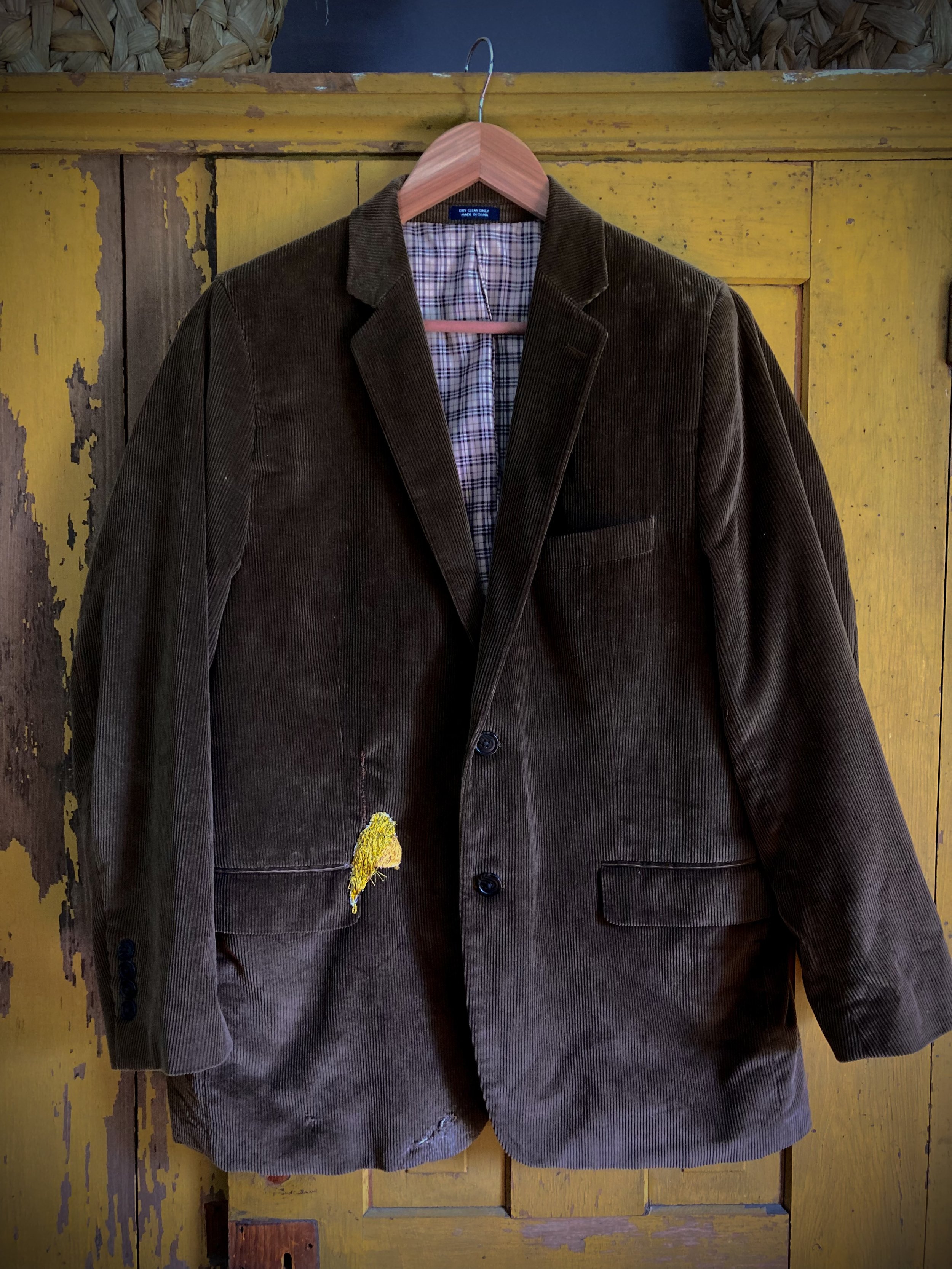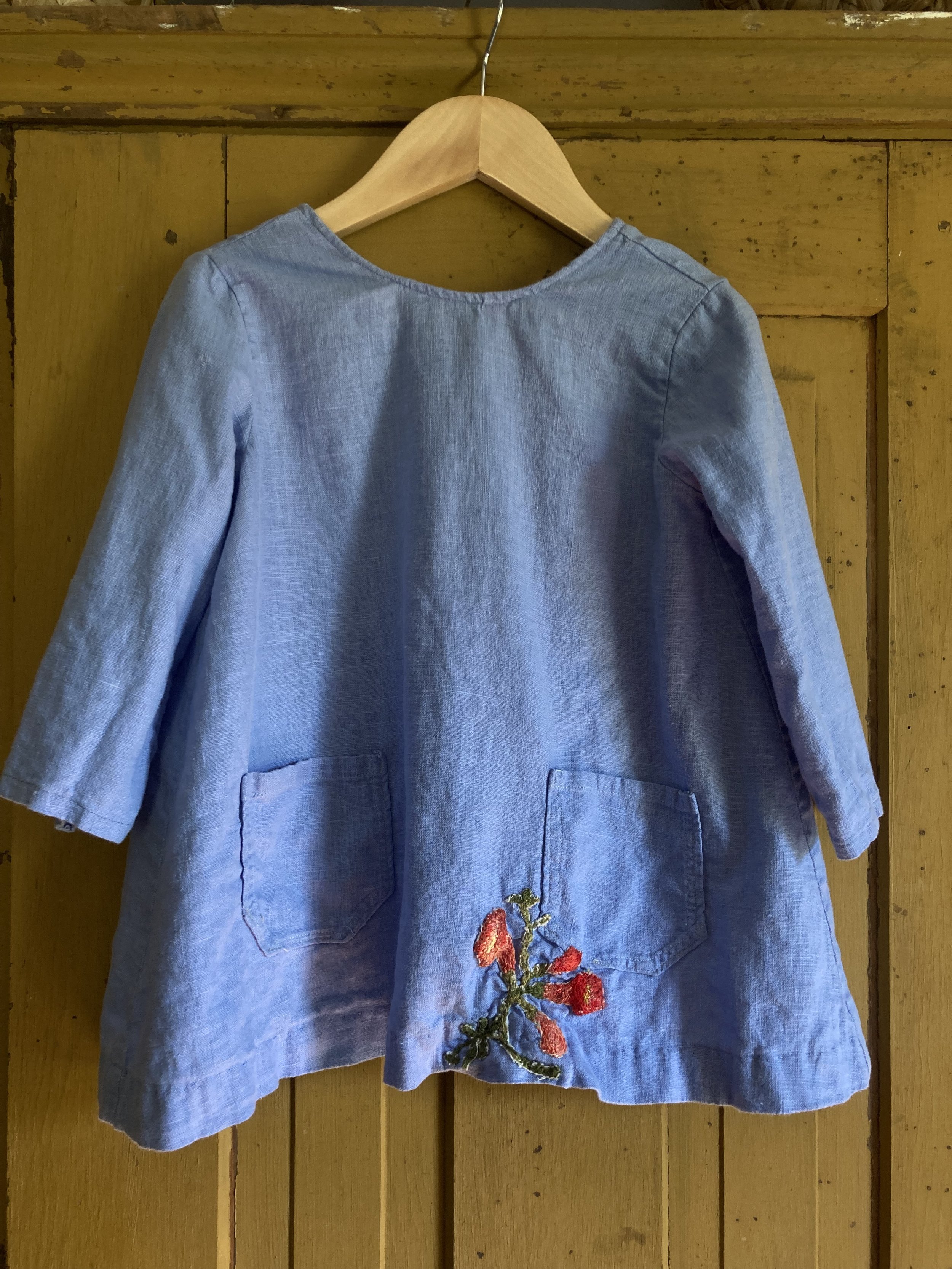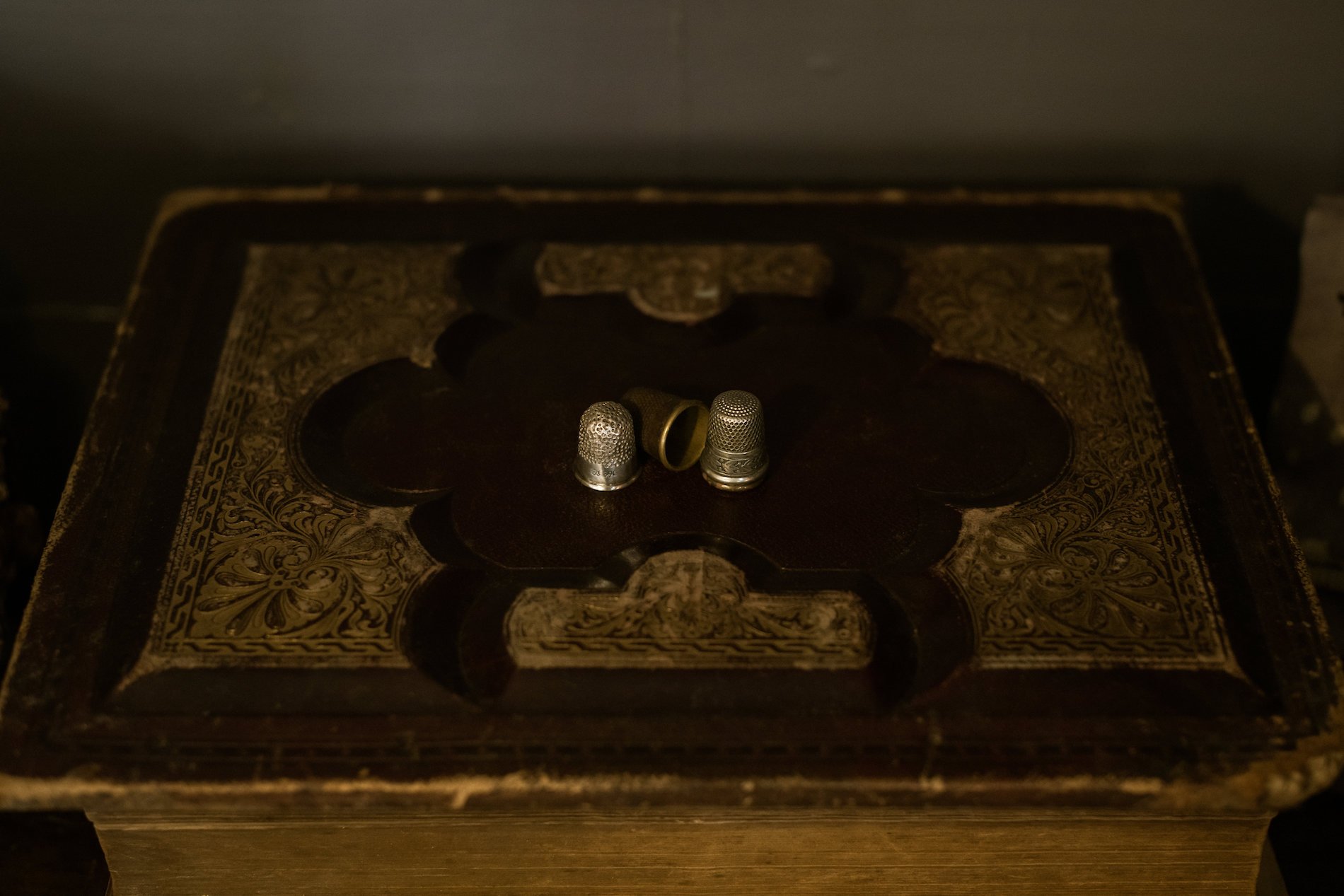
Buck Naked For Sustainability
Buck naked for sustainability? Really?
Audio recording of the article
*Resources for reading at end of article are not recorded.
Fiber, &/or fashion friends &/or anybody wearing clothes, here’s the god’s honest: the only way to truly outrun the multi-layered issues plaguing the garment industry & fast fashion is to go all in and live buck ass naked, but if you live in more than 1 season that’s not going to work, never-mind the nudity laws…
We barely scrape a fingernail across the surface of how clothes are made before we’re met with the dismal reality of what the industry does to the planet and the people working in the garment field.
It doesn’t matter if you don’t give 2 hoots about fashion, if you have to wear clothes (and we do), it’s just a fact.
BUT
Despair and overwhelm don’t help us. They often turn us from the task of trying because it feels so monumental to even address.
Personally I have spent over 20 years learning all the things, from the Higg index, to what is wrong with the Higg index, understanding the history & problems of shepherding and how it currently sustains generations of farmers, fiber creation and garment worker conditions, fashion pollution, greenwashing - you get the idea. Quickly it piles up and can submerge us into a sea of doom.
The truth is that green fashion is complicated. There are the thousand of complicated realities that go into wearing “better” including our financial resources as well as our time and space to hold the multi-layered and complicated beast of a problem.
My main problem with diving into detailed issues is that is that we lose focus & heart. The overwhelming doom doesn’t inspire us. Chastised lectures on the problem don’t meet the masses. I’d rather get into the solutions & joy of how we can turn towards helping the planet and ourselves.
Side note: In my courses we go deeper into the details, articles, references etc. in the fiber class, and it’s a topic I could talk endlessly about but for the non-fiber environmental-impact obsessed I’d like to move along to the number one solution that anyone can employ to their mindset and foster joy in slow fashion.
We have been told these things haven’t we?:
-Wear what you own, Mend, Borrow, Shop 2nd hand or vintage, Shop fair trade, ethical & organic if you need new.
And that’s great. It’s the reduce, reuse, recycle triangle but from an apparel standpoint.
I certainly think that we can stand to adjust our consumer culture mindset but we’re fooling ourselves if we think that we’re going to be able to totally slay that beast. I have some things to adjust & add including my number one point that is overlooked for the “rules” constantly:
#1 most important thing to joyfully create a more sustainable wardrobe?
1. Dream & plan.
This is the entire point behind what I want to teach you.
Dreaming doesn’t cost a dime, dreaming helps us get clear on what we want: what we want to wear, as well as the juicy and delicious life we want to live. Dreaming at the start is also how we return to the same wardrobe full of pieces that leave us contented & pleased.
I encourage everyone not just to think about dream adventures but also to think about what makes you feel whole, contented, and satiated. We take a deeper journey into this in the Heirloom Wardrobe Course and Hone Your Vision Class, but you can start right here & now.
Dream with a purpose: figure out your personal design story & start to edit and create a clothing collection that will fit inside it.
When we do this we design and build a wardrobe outside of time and trend. What stories, themes and palettes do YOU love?
Bonus - a wardrobe collection built this way acts like a continuous capsule wardrobe. Everything holds hands.
Long ago, when helping friends figure out their forever style I used to tell them to take 3 traits of characters, themes, or palettes they loved and intertwine them. It’s simple & it works. Examples:
Sailor/ship & sea, 1930s era fashion, the 4th of July
Dr. Who season (fill in the blank), an oxford philosophy professor, modern skateboarder
You’ve got an idea of what fits in those wardrobes don’t you? What are your 3? Figuring this out will make wearing what we own satiating & a delight.
Spend time leaning into your personal unique style. It’s the most important part of slow design and slow fashion. When we cherish what we own we wear it over and over. It’s the most important thing we can do.
You don’t have to run out and buy new stuff to make this work. Chances are, your most beloved and comfortable pieces already fit inside your plan. But when you do collect something new, knowing how it fits inside your dream design plans will increase its longevity.
And you don’t have to sew to make this your reality. You get to spend time celebrating your essence and your dreams. Then you get to slowly collect and reimagine your wardrobe for that purpose. This will serve you for the rest of your life. Your clothes, your closet, your impact on the planet.
If you can’t afford anything but fast fashion, dreaming, knowing, planning your design story will mean that you buy pieces you’ll wear for a long long time and wearing the shit out of our clothes is what matters most for “green fashion”.
AND yes, sewing can help: The straight forward running stitch does almost everything you’ll ever need. You can learn simple sewing skills to make what you already own more you. You can adjust pieces, take them in, let them out. Add embellishments, cut off embellishments.
2. Take an inventory of your needs + your pieces.
a. Get clear on need versus want.
Bodies change size, clothes wear out (more ideas on that in 3 & 4). Sometimes we need new clothes and we can’t afford nor have the time to hand whittle the most sustainable amazing something-or-other. When we do need something, applying the dream plan that we just talked about will ensure that we love & live in a new piece for a long time.
b. Something arrives = something leaves. If we have enough then committing to giving away something when we replace its function helps to reduce superfluous consuming too. When we have a closet full of pieces we love that work together we’re not going to give a piece away unless it really doesn’t fit or can’t be fixed any more.
The If-Something-Arrives, Something-Leaves method has kept me from procuring a lot of new not-quite-right things AND it has made certain that anything new is going to work on a lot of levels.
c. When you inevitably impulse buy some sassy cheap unneeded little number, notice what drove you & then let that guilt go. It happens to all of us. Honestly, sometimes I buy into marketing and think that new bikini top is going to make my bits perkier and younger. It doesn’t and I notice that too. Also - if we impulse buy inside of our design theme, then these pieces match with what we own and they don’t end up being tossed at the end of the itch. If we can reduce the frequency we’re snared or reduce the frequency we’re throwing away, then we’re still doing the work.
These next 2 thoughts are about how we achieve longevity for our clothing through mending & making:
3. More than mending, design your repair to be beautifully better:
Add beauty and joy to clothing tragedies. It takes time but it also gives us a moment to create magic & meaning.
Embroider or bead over mending stitches. Embroidery or beading can be like painting with thread. I haven’t read books, blogs, taken a class or watched videos about embroidering, but you can OR you can just dive in. Embroidery comes in all forms from abstract art to looking like an impressionist’s painting. You can also look at pinterest, watercolors of birds, plants, scenes, and other folks embroideries, and begin. 10 bucks for thread and needles will give you at least a decade of beauty. Give it a try!
Maker’s tip: I pre-make embroidered patches for the inevitable moment I need them. Then I’m not overwhelmed & annoyed at a hole, I’m excited to use what I’ve dreamed up.
Ex.: I have an old corduroy blazer that belonged to my dearly departed grandfather. Naturally, I forgot I had dog treats in the pocket and my rotten Vegadog tore into the jacket to get to the treats. I mended it first and then added an appliqué of his favorite bird, a gold finch over the no-way-to-make-them-pretty mending stitches. I can’t quite bring myself to complete the appliqué of berry branches over the last teeth marks because we’ve lost our ancient old rhodie beast at this point too and those marks remind me of her incorrigible beautiful spirit. (I’m also showing you that I removed the shoulder padding structure of his coat so that I would feel comfortable wearing it. I didn’t want to look all Dorothy-from-the-Golden-Girls while sporting his coat so I made it work for me.)
Ex. 2: My daughter’s pinafore dress. I made it from a fabric that evidently had some weak spots that turned into holes, I loved the dress so I appliquéd trumpet flowers over the holes and I swear, it’s better now than it was before.





Mend with a flair utilizing a beautiful patterned stitch or with beautiful threads.
Ex.: I’m sharing an example of my favorite pair of jeans. They fit me the best. They have my oil paint marks on them, which I love. And the butt busted completely out. So I’ve repaired them with a bit of that cross hatch stitching that’s pretty beautiful in my opinion.
My 2nd example is a shot of my most favorite linen shirt with a tear in the arm. Same cross hatch stitch, done with care.


Create patches out of beautiful fabric or reclaimed leather.
You can make truly beautiful patches from fabric that matches & blends, or is wildly different, etc.
Ex.: My spouse is the personification of slow fashion. They buy things they love once and wear them forever so when their favorite shirt had shredded elbows I mended the elbows and then used some reclaimed leather to stitch some gorgeous elbow patches.


4. When it’s past the point of mend: Remake.
Make a pattern from that piece that you have worn into the ground.
I teach bespoke pattern making in my Heirloom Wardrobe Course, but I am going to go straight to the heart and share a hack:
If you have a piece of clothing that you have worn into the ground and that has lived its life to the fullest (first off, well done!) 2nd - that often proves you need it, that you find utilitarian use in its everything.
Let’s recreate that bad billy instead of buying a lot of not-quite-right things to try to fill its void.
I have a beloved jacket that is falling into such a shredded state that I don’t think I’m going to be able to patch it, which makes me sad, (I had such an exciting elbow patch I was about to do!) BUT I’m seeing it start to shred everywhere.
I want you to know I bought this jacket. I didn’t make it. And it belies the entire dreaming point:
I bought it on clearance when I was 17 from Old Navy - yes I did. It was what I could afford, it was fast fashion but it was a piece that checked every box: my design theme, color palette, need, and fit. And I’ve worn it to death.
There were times after I was a proper apparel designer that I thought about getting rid of it because I thought I only wanted to wear what I’d made, but I just couldn’t bring myself to do it -thank God. …I also thought of covering the label with a pretty piece of fabric -but that was just pure ego talking.
Its pockets have held my keys & wallet countless times. Its zipper, I will probably reuse in the new version. It’s been an old friend forever. It is the epitome of having found something that fit my style and life that I purchased and have worn to smithereens for 23 years.
A photo of the multiple tears, the side seams are starting to shred too:


I know I’m going to miss it and that I will be disappointed in anything any less. I’ll remake it.
The overview of a how-to:
Cut it apart at the seams
Lay it out on some paper (or brown paper grocery bags)
Draw around those pattern pieces
Add 1/2 inch seam allowance to the newly drawn pattern pieces
Look into existing fabric stash & see if something will not just work but be almost as amazing as the original.
If fabric stash comes up empty, take time to source the right fabric (Order, wash & dry sample fabric swatches)
Make the exact same jacket for the next 20 years. -A little bit bigger, a little bit longer for the ways my body has and will continue to change.
I hope this has been a bit inspirational, a bit educational and given you some ideas and room to think about slow fashion in a productive way.
& I hope you plan & live into tending your soul, your garments, your most juicy and magical life.
Want to delve deeper into the problematic weeds?
(Seriously, Call me, email me, have me on a podcast, send out a smoke signal. I’ve got a lot of resources, years of research & knowledge - etc. & this is a topic dear to me.)
You could start here: (this book is older, but opened a lot of eyes & is a short read): Overdressed the Shockingly High Cost of Cheap Fashion by Elizabeth Kline.
& you can get a good understanding of the complicated problem of fast fashion & doing better by simply looking at the issues plaguing The Higg Index:
What is the Higg Index? It’s supposed to"Measure environmental (energy/greenhouse gas emissions; water; wastewater/effluent; air emissions; waste; and chemicals management) and social impacts across the life cycle of an apparel and footwear product.” Google it here.
BUT I kinda hate it because of its disdain of natural fibers. It’s a good & needed idea, with a lot of issues.
The Higg Index has come under further attack as recently as 2 months ago. The problems are so multilayered. I find the index short sighted and 2 dimensional when we need a multi-layered understanding. A recent article detailing the multilayered issues. & An article older than that that sums up some more issues.
More inspirational action? Interested in fleshing our your dream design theme? Take the Magical Inspiration Board class linked below. Considering becoming your own designer & maker? The Heirloom Wardrobe Course.


